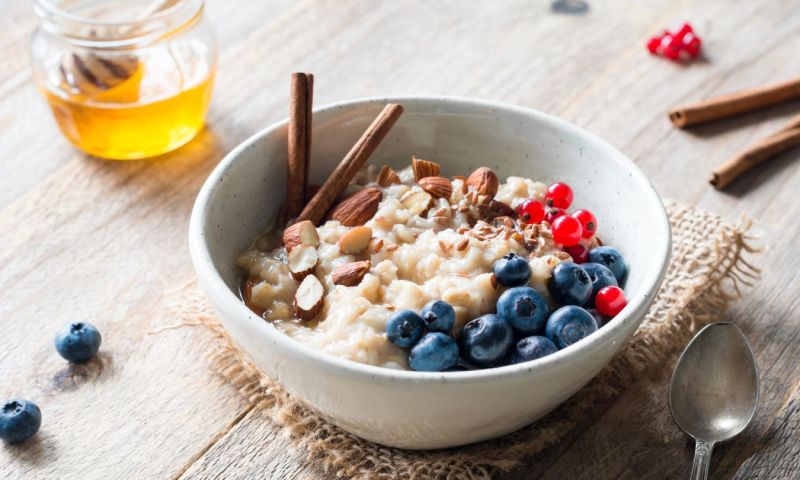Intermittent fasting is quite popular, as many people claim that it has helped them lose weight, feel more energized, and more. As a trainer and nutritionist, I have also worked with some clients who loved how they felt when intermittent fasting, and it allowed them to have more control over their eating habits.
One version of intermittent fasting is the 5:2 diet. Keep reading to learn more about what it entails, as well as the pros and cons, to see if you should give it a try!
What is the 5:2 diet?

The 5:2 diet is a form of intermittent fasting that involves alternating between days of reduced calorie intake and regular eating. It has gained popularity as a flexible approach to managing food habits and creating structure in one’s weekly routine.
While the specifics may vary from person to person, the core idea centers around adjusting your eating patterns a few days a week. Many people find the rhythm of the 5:2 diet easy to incorporate into busy lifestyles, which is a perk. Its simplicity and non-restrictive nature on most days make it a popular option for those exploring different dietary approaches.
How do you follow the 5:2 diet?

According to the Cleveland Clinic, to follow the 5:2 diet, “you eat ‘normally’ five days out of the week. These are your non-fasting days. The other two days are fasting days.” On fasting days, aim for about 500 to 600 calories, focusing on nutrient-dense, low-calorie foods like vegetables, lean protein, and broth-based soups.
Hydration is always important, so drink water, herbal tea, or black coffee throughout the day, no matter how many calories you are eating. On regular eating days, there’s no need to count calories, but it helps to make balanced, healthy choices.
The fasting days can be scheduled based on personal preference — for example, Monday and Thursday. It is recommended that you don’t have the two fasting days be back to back. Over time, many people find the structure of the 5:2 diet sustainable because it only involves short-term calorie restriction each week, not daily dieting.
What are the benefits of the 5:2 diet?

Simplicity and flexibility
The 5:2 diet is easy to follow because you only need to adjust your eating habits two days a week. This makes it more manageable and less restrictive than daily calorie counting.
Improved portion awareness
Fasting days encourage mindfulness about food choices and portion sizes, which can carry over into regular eating days and lead to better long-term habits.
Supports healthy habits
The structure of the 5:2 diet helps create a routine that can support other healthy lifestyle changes, such as cooking more at home, planning meals ahead, and drinking more water throughout the week.
Are there any potential risks?

While the 5:2 diet can be effective for many, it may not be suitable for everyone and carries some potential risks. Fasting days with very low calorie intake can cause dizziness, fatigue, irritability, or difficulty concentrating, especially when starting. People with certain medical conditions, such as diabetes, eating disorders, or those who are pregnant or breastfeeding, should avoid intermittent fasting without medical advice.
Additionally, some may overeat on non-fasting days, which can counteract benefits. It’s important to listen to your body, stay hydrated, and consult a healthcare professional before starting the 5:2 diet to ensure it’s safe for your individual needs.
Example weekly meal plan on the 5:2 diet

Monday (regular eating day)
- Breakfast: Oatmeal with berries and nuts
- Lunch: Grilled chicken salad with kale and spinach, topped with olive oil and lemon juice
- Dinner: Baked salmon with jasmine rice and steamed veggies
- Snacks: Greek yogurt and an apple
Tuesday (fasting day – 500 calories)
- Breakfast: Scrambled eggs with spinach (150 calories)
- Lunch: Vegetable soup with a side salad (200 calories)
- Dinner: Steamed asparagus and grilled tofu (150 calories)
Wednesday (regular eating day)
- Breakfast: Whole-grain toast with avocado and poached egg
- Lunch: Turkey sandwich with lettuce, tomato, and mustard
- Dinner: Stir-fried vegetables with brown rice and shrimp
Thursday (fasting day – 600 calories)
- Breakfast: Smoothie with spinach, cucumber, and a small banana (250 calories)
- Lunch: Grilled chicken breast with steamed green beans (350 calories)
Friday to Sunday (regular eating days)
- Continue to enjoy balanced meals that you enjoy that focus on lean protein, whole grains, fruits, and vegetables. Include healthy snacks like nuts or fruit as needed.
Frequently asked questions

What foods can you eat on a 5:2 diet?
On the 5:2 diet, you can eat anything on non-fasting days, but whole foods like lean protein, vegetables, fruits, and whole grains are best. On 500–600 calorie fasting days, choose low-calorie, nutrient-dense options like soups, salads, eggs, yogurt, and steamed vegetables to stay satisfied while staying within calorie limits.
How much weight can you lose on a 5:2 diet?
Weight loss on the 5:2 diet varies, but most people lose one to two pounds per week with consistent adherence if they are in enough of a calorie deficit. Results depend on your starting weight, activity level, and overall calorie intake. Combining the diet with regular exercise and healthy eating on non-fasting days can enhance and sustain your progress.
What can I eat on a 500-calorie fasting day?
On a 500-calorie fasting day, focus on high-volume, low-calorie foods like leafy greens, vegetables, broth-based soups, and lean protein. Eggs, tofu, Greek yogurt, and small portions of fruit can also fit. Drink plenty of water, black coffee, or herbal tea to stay full and hydrated throughout the day.




